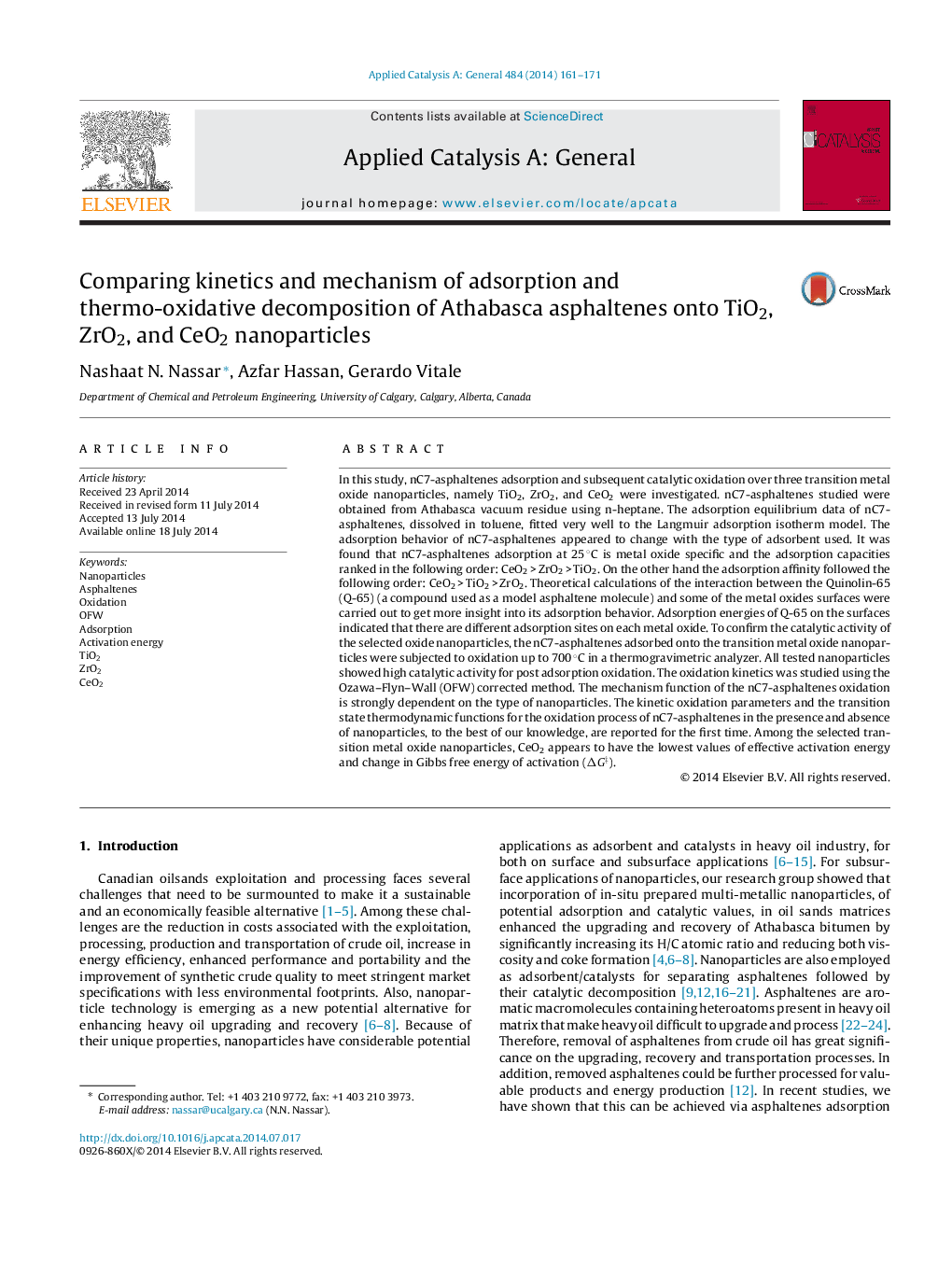| کد مقاله | کد نشریه | سال انتشار | مقاله انگلیسی | نسخه تمام متن |
|---|---|---|---|---|
| 39663 | 45830 | 2014 | 11 صفحه PDF | دانلود رایگان |

• Oxide nanoparticles could be used as adsorbent/catalysts for asphaltenes adsorption and subsequent catalytic oxidation.
• Adsorption isotherms and kinetics and mechanisms of oxidation reaction were studied in detailed.
• Adsorption and catalytic oxidation are oxide specific.
• The corrected OFW method was employed for effective activation energy calculation.
In this study, nC7-asphaltenes adsorption and subsequent catalytic oxidation over three transition metal oxide nanoparticles, namely TiO2, ZrO2, and CeO2 were investigated. nC7-asphaltenes studied were obtained from Athabasca vacuum residue using n-heptane. The adsorption equilibrium data of nC7-asphaltenes, dissolved in toluene, fitted very well to the Langmuir adsorption isotherm model. The adsorption behavior of nC7-asphaltenes appeared to change with the type of adsorbent used. It was found that nC7-asphaltenes adsorption at 25 °C is metal oxide specific and the adsorption capacities ranked in the following order: CeO2 > ZrO2 > TiO2. On the other hand the adsorption affinity followed the following order: CeO2 > TiO2 > ZrO2. Theoretical calculations of the interaction between the Quinolin-65 (Q-65) (a compound used as a model asphaltene molecule) and some of the metal oxides surfaces were carried out to get more insight into its adsorption behavior. Adsorption energies of Q-65 on the surfaces indicated that there are different adsorption sites on each metal oxide. To confirm the catalytic activity of the selected oxide nanoparticles, the nC7-asphaltenes adsorbed onto the transition metal oxide nanoparticles were subjected to oxidation up to 700 °C in a thermogravimetric analyzer. All tested nanoparticles showed high catalytic activity for post adsorption oxidation. The oxidation kinetics was studied using the Ozawa–Flyn–Wall (OFW) corrected method. The mechanism function of the nC7-asphaltenes oxidation is strongly dependent on the type of nanoparticles. The kinetic oxidation parameters and the transition state thermodynamic functions for the oxidation process of nC7-asphaltenes in the presence and absence of nanoparticles, to the best of our knowledge, are reported for the first time. Among the selected transition metal oxide nanoparticles, CeO2 appears to have the lowest values of effective activation energy and change in Gibbs free energy of activation (ΔG‡).
Figure optionsDownload high-quality image (153 K)Download as PowerPoint slide
Journal: Applied Catalysis A: General - Volume 484, 22 August 2014, Pages 161–171